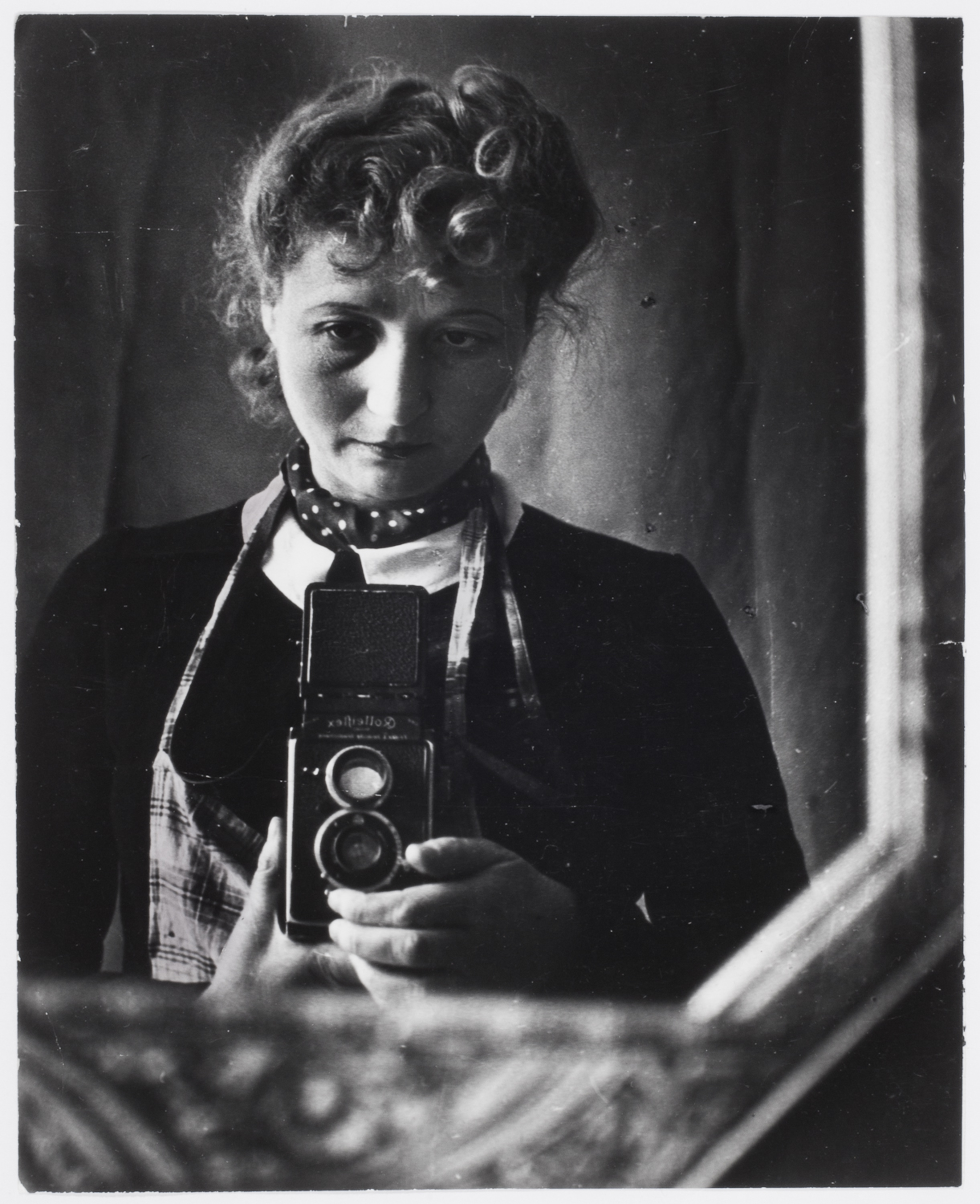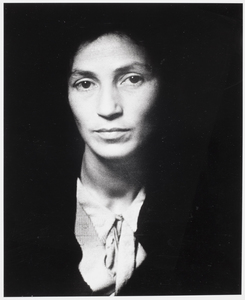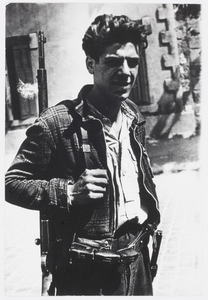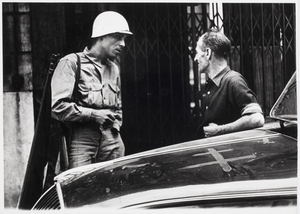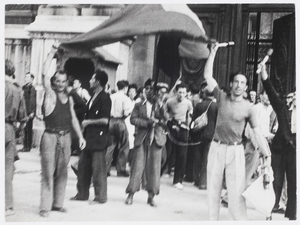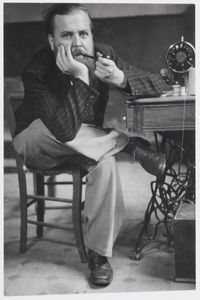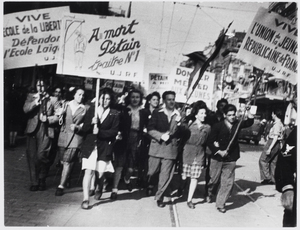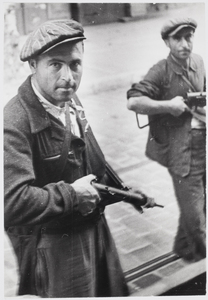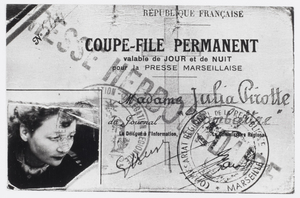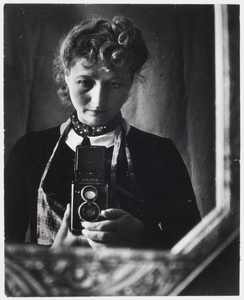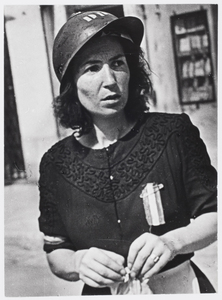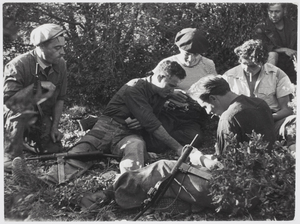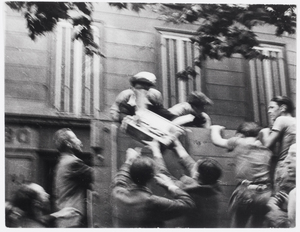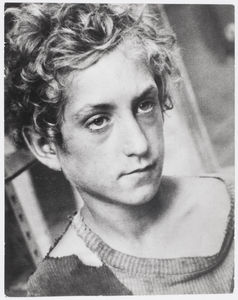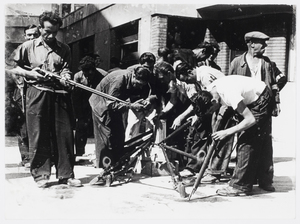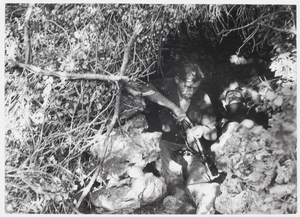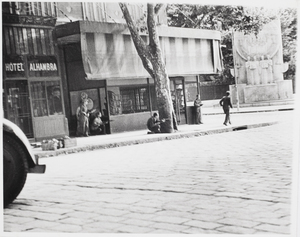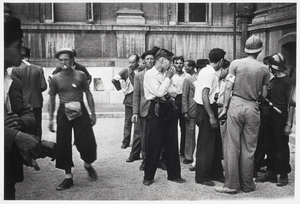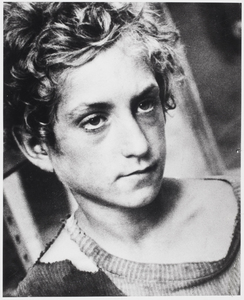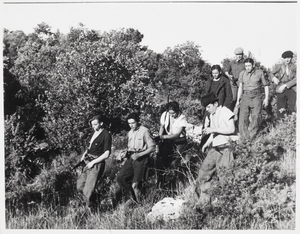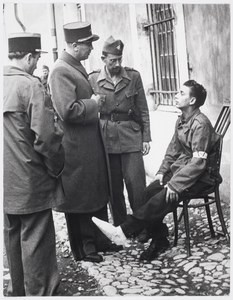Born Julia Diament in Konskowola, a small Jewish town in Poland, she was unable to attend school and describes herself and her siblings as being entirely self-taught. Due to the political climate, the three Diament siblings were continually threatened and persecuted; in 1925, eighteen-year-old Julia was imprisoned for four years. In 1934, following threats of further imprisonment, Pirotte fled Poland to join her sister in Paris. While seeking refuge in Brussels with the Secours Rouge (a network supporting political refugees), she met activist Jean Pirotte; their 1935 marriage granted Julia Belgian citizenship. After losing her job in 1936, Pirotte was given a Leica Elmar 3 camera and encouraged to enroll on a photography and journalism course by Suzanne Spaak, who had read some of Pirotte’s articles in Femme magazine.
In 1931 she was asked to cover events in the Baltic States for the press agency Foto Waro. On her way back to Belgium, war was declared and Pirotte was forced to join the migration to France. After working at several arms factories, she became a photo-reporter for Dimanche Illustré, which allowed her to carry out work for the Resistance, for whom she transported propaganda materials, weapons, and forged papers. Her sister, Mindla Maria Diament (1911–1944) also a member of the French Resistance, was tortured and executed by the Vichy regime, while her brother perished in a Soviet gulag.
Her photographs taken during the 1944 uprising in Marseille have been widely used by press agencies and serve as important documentation of the struggle for liberation in France during World War II. Pirotte captured memorable images not only of the maquis in action, but also of the arrival of the Allies and the burial of those who fell during the struggle.
After the war she returned to Poland to find it devastated by the Nazi occupation, and began photographing the extreme poverty and suffering she witnessed there. She founded WAF photo agency with a group of young photographers and continued to work as a journalist, making a particularly harrowing report on the atrocities committed in Kielce during the July 4, 1946 pogrom. In 1948 Pirotte attended the World Congress of Intellectuals for Peace, where she photographed Pablo Picasso and others.
Although not as widely recognized as some of her contemporaries who documented the military campaigns of World War II, Pirotte’s contribution to war photography is invaluable in its portrayal of civilians living under enemy occupation and their struggle for freedom. Her courage and dedication to the plight of the persecuted has insured that the bravery of so many men, women, and children has not been forgotten.
Her work has been exhibited at the Fotografiska Museet in Stockholm, the International Center of Photography, and the Jewish Historical Institute in Warsaw. Significant bodies of work are housed at the United States Holocaust Memorial Museum in Washington and the Yad Vashem on-line archive. In 1994, Françoise Thébaud published a biography of the photographer titled Julia Pirotte: une photographe dans la Résistance. Following Pirotte’s death, an album of her work entitled Pologne: les années-mirage was published by Les Chiroux--Centre culturel de Liège, 2002.
Reference:
Francoise Thébuad, Julia Pirotte: une photographe dans la Résistance. Charleroi, Belgium: Musée de la photographie, 1994.
Laura Iseli


